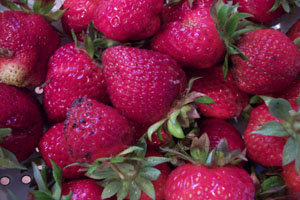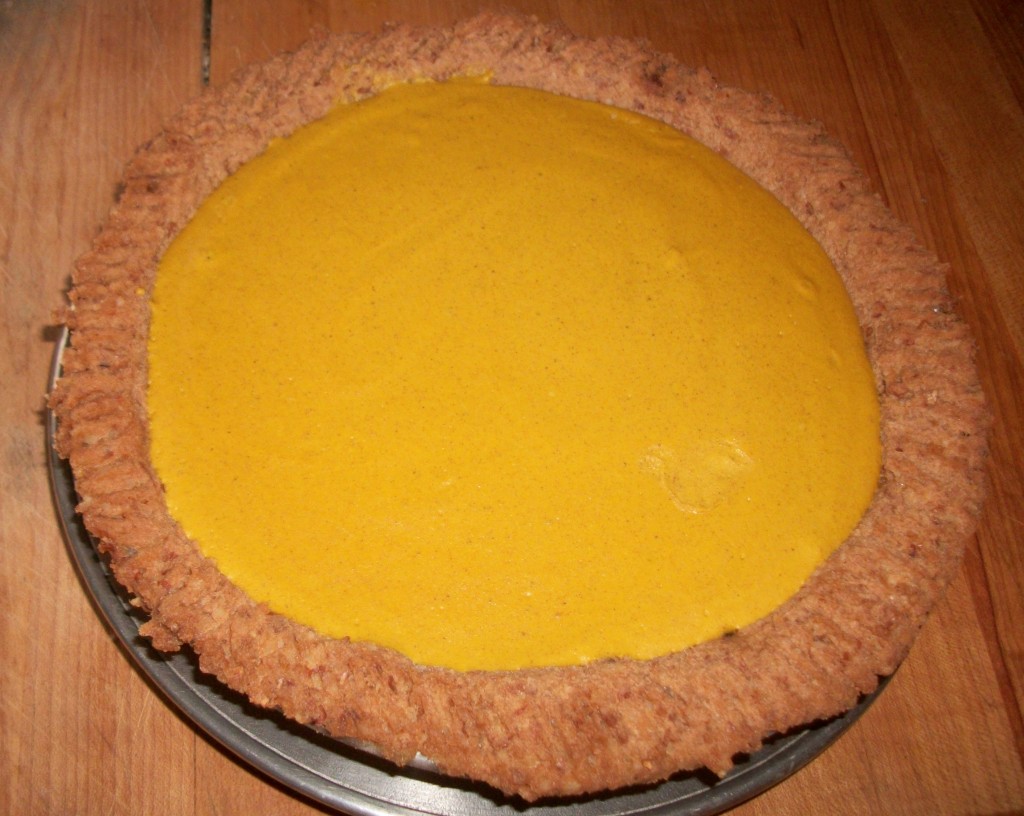Healthy Veggie Burgers.
Finding a healthy “veggie” burger is a lot harder than it sounds. Sure, you can find one on just about every menu. But when is a veggie burger not really a veggie burger? When the ingredients look something like this:
water, soy protein concentrate, wheat gluten, contains less than 2% of methylcellulose, salt, caramel color, dried onions, yeast extract, sesame oil, hydrolyzed wheat protein, natural and artificial flavor (non-meat), disodium guanylate, disodium inosinate
These are the ingredients in one of the better burgers out there. For most the list of ingredients gets longer and a lot harder to pronounce. When it comes to food I have to agree with Michael Pollan, if I can’t pronounce it, I certainly don’t want to eat it. For most of these burgers soy in some form is a key ingredient. Many non-organic soy products contain traces of the neurotoxin hexane. Soy processors use hexane to divide the beans into fat and protein. The beans are cracked, heated, and rolled into flakes, which are then soaked in a hexane bath to extract the oil. All of these products are made from gmo soy. Which raises an entirely new set of concerns. I looked at the countless options of “meat-free” products in the grocery store and couldn’t find one brand that was both organic and used non GMO soy. Ditto for the health food store.
So what is a girl to do when trying to find a worthy healthy companion for the carrot dog? You guessed it: make your own.
The following recipe is a slightly modified version of the slider burger recipe from Raw Soul. The great thing about this burger is that it can be eaten raw or cooked. Either way, absolutely delicious.
Burgers
3 cups soaked walnuts (soaked overnight)
½ cup sprouted green lentils
1 cup sun-dried tomatoes (soaked 2 hours)
½ minced onion
2 tablespoons apple cider vinegar
2 large minced garlic cloves
1 tablespoon olive oil
1 tablespoon smoked paprika
1 teaspoon sea salt
1/2 cup of chopped fresh parsley
¼ cup flax meal
Water as needed
In food processor, pulse all ingredients, except parsley and flax meal until smooth, adding water if needed. Move to bowl. Add parsley and flax meal. Mix well and form into burgers.
Dehydrate for about 6 hours on a teflex sheet. Turn over and dehydrate for about 2 more hours. Don’t over dehydrate, they should still “give a little” and be moist on the inside.
If you want to cook these, the best way is to pan sear them on each side and then cook over medium low heat for about 5 minutes each side.
They keep in the fridge for about a week.
To Sprout Lentils:
Soak lentils in a bowl of water overnight, rinse
Drain into a colander with a fine mesh screen
Place Colander over a small bowl and cover with a dish towel. In a day or so they will have sprouted little tails like the photo above.




 Spring has officially sprung. The bulbs are peaking up through the cold ground, buds are visible on the apple trees, and the birds have started chirping. From the moment we spring forward into daylight savings time, my mind turns to thoughts of planting our vegetable garden. There is nothing quite like walking out into the garden and eating something freshly picked. I could not LIVE without it. At this time of year cold hardy seeds can start to be planted. Cold hardy seeds would be any kind of pea or lettuce, leafy greens like kale or spinach. It is a great way to get out of winter hibernation and start thinking warm weather. Bartlett’s Farm has a wonderful selection of all kinds of organic seeds to choose from. With the garden center now officially open, browsing though the seed packets and chatting with some of the super knowledgeable garden staff is sure to inspire. If you haven’t done so already think about designating a small corner of your garden to edible plants. It is easy to build a raised bed from scrap wood or a pre made kit, then start planting your favorites. Maybe you don’t have room for a raised bed and can’t bear to give up your flower bed? A dear friend of mine plants his flower garden by intermingling his favorite herbs and vegetables throughout the patch. It is a truly beautiful and unique way to plant. It is easy to be overwhelmed at first when thinking of planting a vegetable garden, start small and branch out from there. If seeds aren’t your thing, think about edible landscaping. Why not plant a fruit tree, or a blueberry bush? The time and effort spent digging will be well worth it when you can pick a fresh apple and taste the difference. I was asked once to name my favorite vegetable. I started by saying asparagus. Of course anyone who knows me knows that it is impossible for me to choose just one. My favorite is ususally the one that I have just finished planting or eating. I probably picked that initially because when I think of asparagus I remember digging the trenches with my husband ( it took hours), I remember being covered in mud (it was cold and wet), I remember seeing the first stalk emerge in the spring and I remember waiting 3 years to eat any (I forgot about that part). The first stalk I ate was the most delicious stalk of asparagus I had ever tasted. We planted it together, we waited, we were patient. There is a real joy in growing your own food. Great stories emerge, laughter ensues, and a delicious meal is sure to be had by all. Happy Spring. Happy planting! A great resource for pre-made raised beds:
Spring has officially sprung. The bulbs are peaking up through the cold ground, buds are visible on the apple trees, and the birds have started chirping. From the moment we spring forward into daylight savings time, my mind turns to thoughts of planting our vegetable garden. There is nothing quite like walking out into the garden and eating something freshly picked. I could not LIVE without it. At this time of year cold hardy seeds can start to be planted. Cold hardy seeds would be any kind of pea or lettuce, leafy greens like kale or spinach. It is a great way to get out of winter hibernation and start thinking warm weather. Bartlett’s Farm has a wonderful selection of all kinds of organic seeds to choose from. With the garden center now officially open, browsing though the seed packets and chatting with some of the super knowledgeable garden staff is sure to inspire. If you haven’t done so already think about designating a small corner of your garden to edible plants. It is easy to build a raised bed from scrap wood or a pre made kit, then start planting your favorites. Maybe you don’t have room for a raised bed and can’t bear to give up your flower bed? A dear friend of mine plants his flower garden by intermingling his favorite herbs and vegetables throughout the patch. It is a truly beautiful and unique way to plant. It is easy to be overwhelmed at first when thinking of planting a vegetable garden, start small and branch out from there. If seeds aren’t your thing, think about edible landscaping. Why not plant a fruit tree, or a blueberry bush? The time and effort spent digging will be well worth it when you can pick a fresh apple and taste the difference. I was asked once to name my favorite vegetable. I started by saying asparagus. Of course anyone who knows me knows that it is impossible for me to choose just one. My favorite is ususally the one that I have just finished planting or eating. I probably picked that initially because when I think of asparagus I remember digging the trenches with my husband ( it took hours), I remember being covered in mud (it was cold and wet), I remember seeing the first stalk emerge in the spring and I remember waiting 3 years to eat any (I forgot about that part). The first stalk I ate was the most delicious stalk of asparagus I had ever tasted. We planted it together, we waited, we were patient. There is a real joy in growing your own food. Great stories emerge, laughter ensues, and a delicious meal is sure to be had by all. Happy Spring. Happy planting! A great resource for pre-made raised beds:  The food we choose to EAT is one of the most important decisions that we can make when it comes to maintaining our health. The more fresh fruits and vegetables that we can incorporate into our diet the healthier we will be. In fruits and vegetables there is a life giving element that exists: enzymes.
The food we choose to EAT is one of the most important decisions that we can make when it comes to maintaining our health. The more fresh fruits and vegetables that we can incorporate into our diet the healthier we will be. In fruits and vegetables there is a life giving element that exists: enzymes. Chia seed is an ancient superfood. It is a member of the mint family: Salvia Hispanica. The little seeds were once a staple of the Incan, Mayan and Aztec cultures, along with the Native Americans of the southwest. Chia is actually the Mayan word for strength. The seeds were used by these ancient cultures as energy food, especially for their running messengers. In the southwest United States chia seeds became known as “Indian running food.”
Chia seed is an ancient superfood. It is a member of the mint family: Salvia Hispanica. The little seeds were once a staple of the Incan, Mayan and Aztec cultures, along with the Native Americans of the southwest. Chia is actually the Mayan word for strength. The seeds were used by these ancient cultures as energy food, especially for their running messengers. In the southwest United States chia seeds became known as “Indian running food.”











